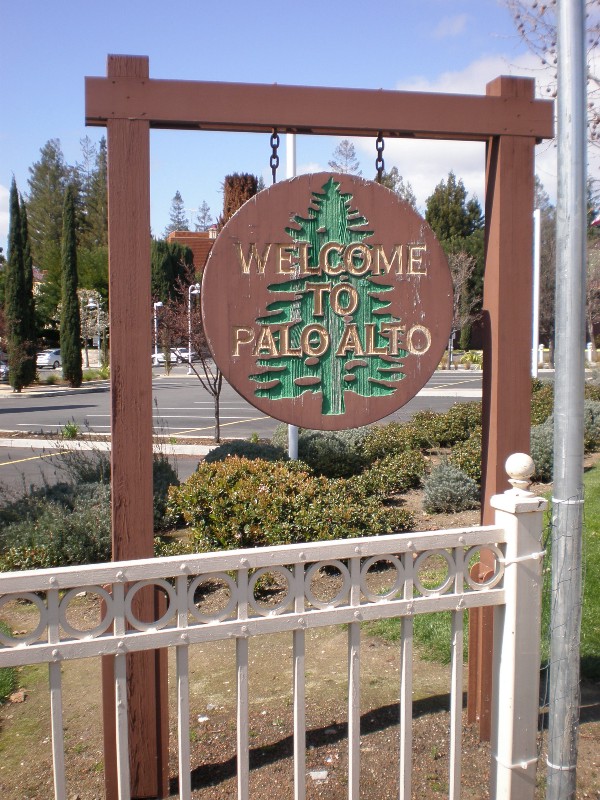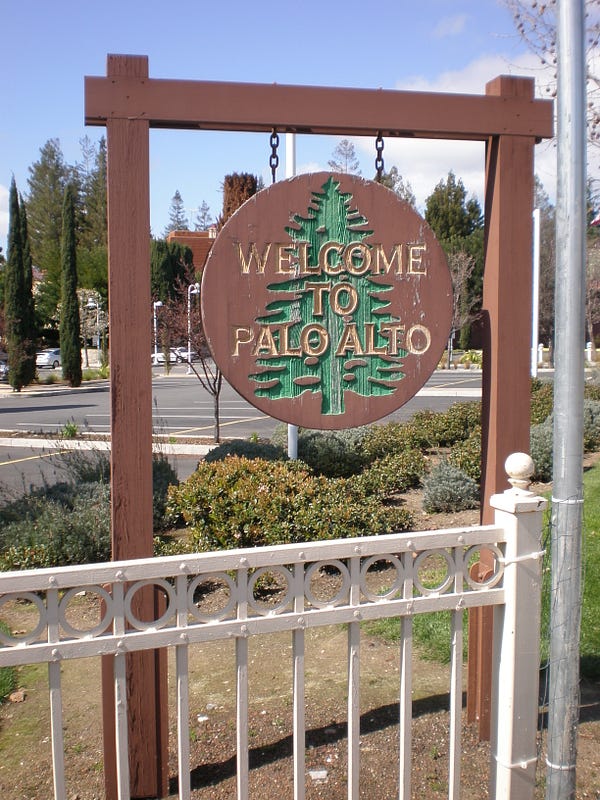Physical Address
304 North Cardinal St.
Dorchester Center, MA 02124
Physical Address
304 North Cardinal St.
Dorchester Center, MA 02124

Co-authored by Tony Albert and Jeff Fong
SF Curbed recently sat down with Patrick Burt, Mayor of Palo Alto, to get his response to the high profile resignation of Kate Vershov Downing. Downing, of course, was the Palo Alto Planning Commissioner who publicly announced that she will move her family from the city because of high housing prices. Mayor Burt’s response illustrates a complete failure to accept either the nature or the cause of our housing crisis. And were we not so desensitized to this type of thinking here in the Bay Area, it would be hard to distinguish his comments from satire.
Mayor Burt’s first, and perhaps most bizarre, assertion is that Palo Alto’s problem is job growth—both within the city as well as within its Peninsula neighbors. And that part of the solution must be to slow down or displace new job creation. Take a minute and let that sink in.
An elected government official is calling out job growth as a problem, and advocating for policies to slow it down. Mayor Burt says that…
we’re in a region that’s had extremely high job growth at a rate that is just not sustainable if we’re going to keep [Palo Alto] similar to what it’s been historically. Of course we know that the community is going to evolve. But we don’t want it to be a radical departure. We don’t want to turn into Manhattan.
Job growth increases housing demand, and if housing supply increases more slowly than housing demand, housing prices rise to make up the difference. Mayor Burt is willing to admit that housing prices are too high, but actively rejects the idea that Palo Alto needs to significantly intensify land use with town homes or multi-family apartments. This leaves him backed into the absurd corner of addressing high housing costs by trying to make Palo Alto less accessible, to reduce demand instead of increasing supply and making more room.
His “Manhattanization” comment, too, is a straw man. Palo Alto could double or even triple its housing stock without adding a single steel-framed building, much less a true high-rise. We’re talking multi-family apartment buildings and row houses, not the Empire State Building.
Based on 2010 Census data, in order to match Manhattan, Palo Alto would need to increase its population density (residents/sq mile) by 2,500%. Nobody is suggesting that. Even a massive 70% density increase would put Palo Alto only on par with nearby Redwood City—hardly a cramped metropolis.
Mayor Burt continues that the genesis of the crisis…
“all goes back to the founding of Silicon Valley, when we were surrounded by predominantly residential communities, with Palo Alto as a jobs center. That was fine for the time. But now places like Mountain View and Menlo Park are huge jobs centers too, and that change has come really just in the last decades…Cities are still embracing huge commercial development with millions of square feet of office space they can’t support.”
The argument, it seems, is that things were fine when Palo Alto was the only community experiencing job growth, since neighboring cities could shoulder the city’s excess housing demand. And the real problem is that these other cities now have the audacity to accept their own job growth rather than housing Palo Alto’s overflow.
We’d be hard-pressed to find a better example of the failure of regional governance than what Mayor Burt has described. Every Peninsula city has already enjoyed the benefits of job growth, but not one has accepted the attendant responsibility of increasing housing stock. This needs to change, and framing the issue as anything but region-wide undersupply of housing is wrongheaded.
Mayor Burt does raise one legitimate point in his concerns over mobility.
“We can reduce the problem and try to mitigate it, but we can’t reverse long-term trends. The community would be more willing to embrace new development, even commercial development, if we could solve the transit problem. Our community will not accept deterioration in our mobility. That problem is going to get worse before it gets better, but just in the last year, for the first time ever, I’ve become really confident that things will get better.”
Palo Alto is served by Caltrain’s second-busiest stop. Thousands of commuters take advantage of the connection to San Jose and San Francisco each day. With electrification of the corridor and High Speed Rail on the horizon, this station is perfectly situated to accommodate even more erstwhile car commuters. If Mayor Burt is genuinely concerned with sustainable mobility, he’d advocate for as much density around the station as land prices will support.
If his goal is, instead, to maintain empty roads and ample street parking for incumbent Palo Altans, then there’s nothing else to do but ward off newcomers. Based on Mayor Burt’s statements, it appears he’s interested in the latter.
The policies and attitudes prevalent throughout Palo Alto are rooted in decades of homeowner privilege. California’s infamous Prop 13 capped property taxes at 1% of assessed value at the time of purchase. This means homeowners who’ve lived in Palo Alto longest, and are most married to the status quo, receive preferred tax treatment. If property owners were assessed at a higher, uniform rate, fewer of them could afford to hold valuable land as single family detached housing; as demand to live in an area increased, increasing housing prices would push up tax rates, and properties would be gradually converted to higher-valued uses that were capable of sustaining the tax rate.*

But even if there were individuals who kept high-valued parcels locked up in the form of single family housing, that wouldn’t be bad. They’d at least be internalizing the costs of their actions by paying for the privilege of withholding land from more intensive use. And this is probably what’s most infuriating about the mindset exemplified by Mayor Burt and other Peninsula NIMBYs. They have the privilege of making choices that affect others throughout the region, yet bear none of the negative consequences of those choices.
In all the back and forth, you’ll hear individuals like Mayor Burt speak as if there’s something right or natural about the status quo. There’s not. The status quo was created by a witch’s brew of policies all interacting together over a century of regional development. The mortgage income tax deduction, Prop 13, and the balkanization of Bay Area governance all conspired to create a class of petite landed gentry, gave them the power to strangle the region’s housing production, and then insulated them from the consequences. The road to today was paved with arbitrary decisions.
The status quo isn’t defensible if you’re concerned with environmental degradation, inequality, poverty, slow growth, or even the decline of property rights. But, for tax protected homeowners, the status quo is exactly what they want and that’s reason enough for them to defend it. If Mayor Burt had simply called it like it is—that those in control of Palo Alto land use like the status quo, aren’t concerned with how it affects others, and will continue blocking incremental change—then we could have at least applauded his honesty. Given his response to Downing, however, we can’t commend him even for that.
*DISCLAIMER: the original policy justification for prop 13 was to prevent retired homeowners on fixed incomes from being taxed out of their homes due to the skyrocketing inflation of the Carter years. I don’t take issue with that goal so much as the specific policy used to achieve it and the knock-on effects that said policy has had on the political economy of Bay Area land use.
[Originally published on the blog Tech For Housing]
I still think the best way to protect homeowners from being forced out of their homes via property tax is to allow property taxes to be paid either in fractional title to the property (so that at a 2% tax rate, the city would own the property after 50 years) or to be paid in a lump sum from the sale of the property (here you might have to do some more careful accounting to deal with variable assessment of the property at various points in its history). Property tax is, by definition, only levied on people who have enough assets to pay for it – the only problem is that the assets aren’t liquid, which could be addressed by allowing the payment to take non-liquid form.